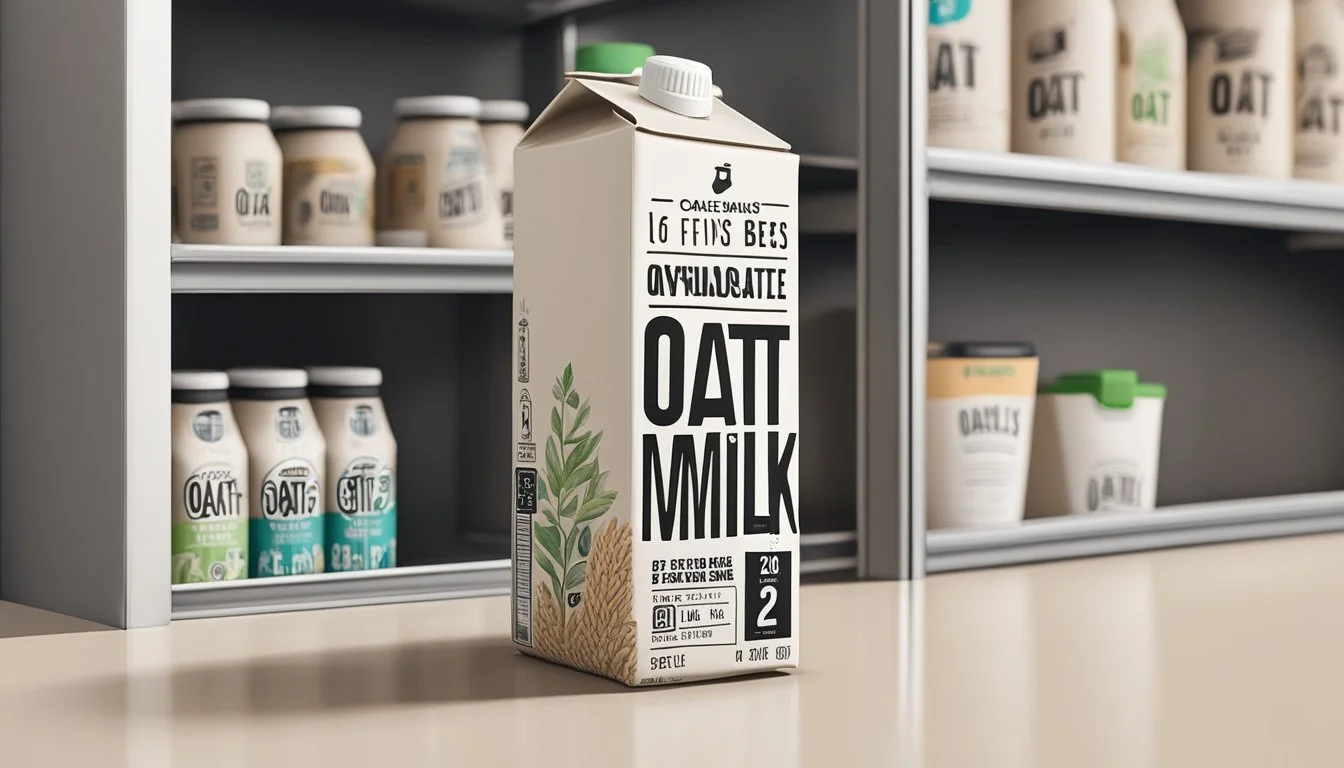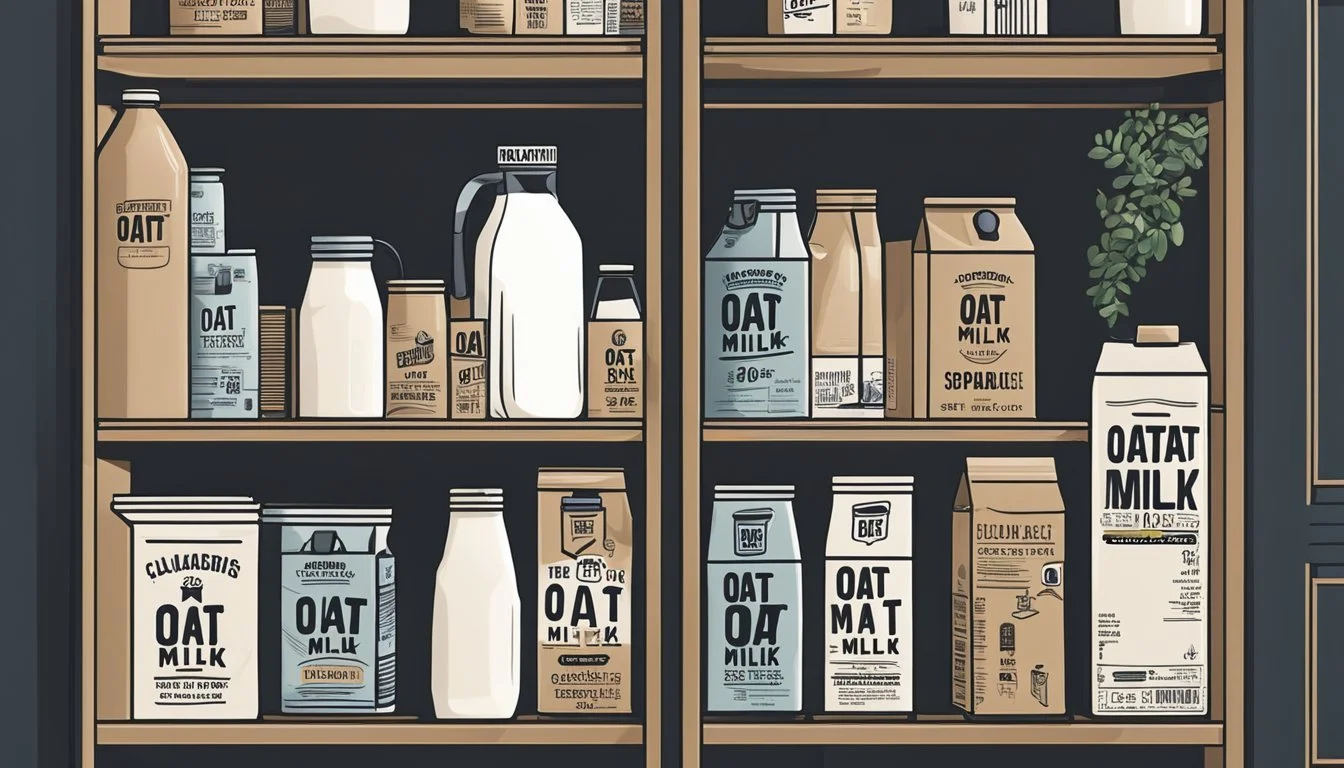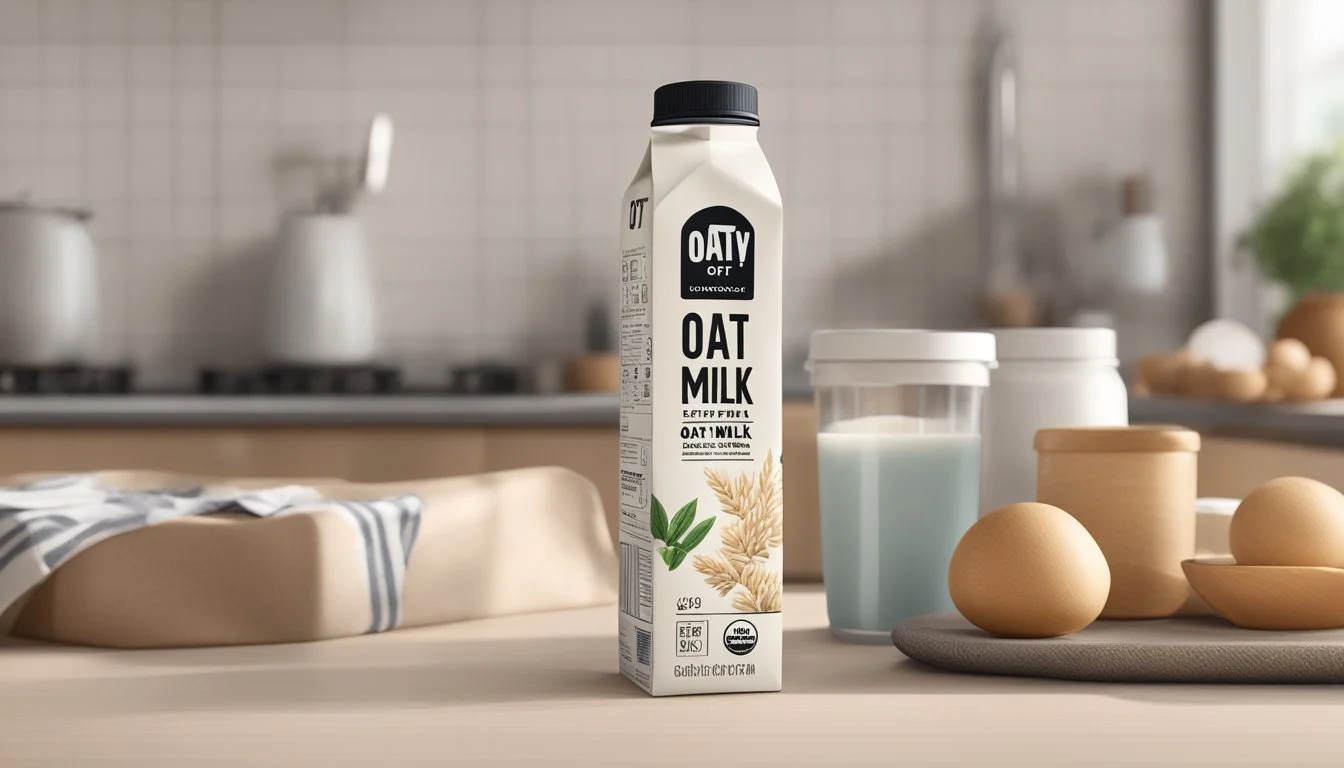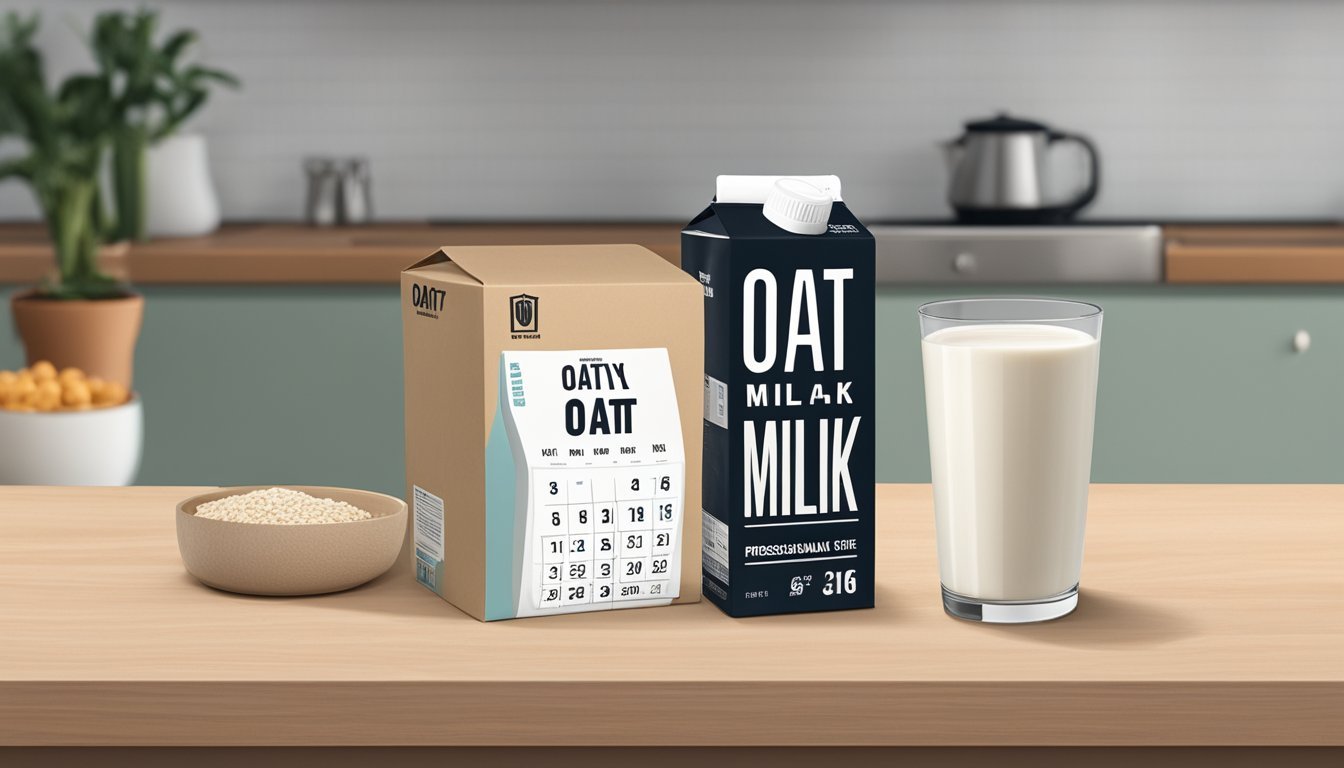How Long Does Oatly Oat Milk Last?
Understanding Shelf Life and Storage Tips
Understanding the shelf life of oat milk is key for consumers who opt for this popular plant-based milk alternative. Oatly oat milk, a leading brand in the market, offers both shelf-stable and refrigerated options, each with different storage guidelines and expiration timelines. Shelf-stable oat milk by Oatly, designed for long-term storage, generally has a lifespan ranging from 30 to 90 days when unopened and stored in a cool, dry place away from direct sunlight. The exact expiration date, however, is always printed on the packaging to ensure consumers have accurate information.
Once opened, the clock begins ticking on the freshness of the refrigerated oat milk. It is recommended to consume Oatly's refrigerated oat milk within seven to ten days for optimal quality. Even though some consumers may find the oat milk lasts slightly beyond this time frame, it is important to pay close attention to any changes in the product. Subtle signs like unusual odors, changes in texture or color, or separation, even after shaking the container, can indicate that the oat milk is no longer fresh and should be discarded.
For those opting for the shelf-stable variety, the unopened product typically remains fresh for six to twelve months, and some may even be viable up to eighteen months, particularly when the oat milk was very fresh prior to the shelf stabilization process. The longevity of these products makes them an excellent choice for those looking to stock up on non-dairy milk alternatives without worrying about frequent grocery runs. However, similar to their refrigerated counterparts, once opened, they need to be consumed within a similar time frame and stored in the refrigerator to maintain their quality and freshness.
Understanding Oat Milk
Oat milk is a plant-based milk alternative gaining popularity for its nutritional value and environmental benefits. It caters to a range of dietary preferences, including vegan, dairy-free, and those seeking healthier lifestyles.
Types of Oat Milk
Oatly, a frontrunner in the market, offers various oat milk products that appeal to diverse consumer needs. These can be broadly categorized into two types:
Shelf-stable Oat Milk: This variety has been processed to remain fresh without refrigeration until opened. It typically has a shelf life extending several months past its printed date.
Refrigerated Oat Milk: Sold chilled and must be kept in the refrigerator. It usually has a shorter shelf life and should be consumed within 7-10 days of opening.
Additionally, there is homemade oat milk, which lacks the preservatives found in commercial options, resulting in a shorter shelf life of about 4-5 days when stored properly in the refrigerator.
Nutritional Profile
Oat milk offers a unique nutritional profile that distinguishes it from dairy milk.
Vitamins: It is often enriched with vitamins A, D, B2, and B12.
Protein: Commercial oat milk contains about 2-4 grams of protein per serving, less than cow's milk but comparable to other plant-based milks.
Soluble Fiber: An attribute distinct to oats, this type of fiber can be heart-healthy.
Environmental Impact
Compared to dairy milk, oat milk typically has a lower environmental footprint.
Water Usage: The production of oat milk requires significantly less water than cow's milk.
Greenhouse Gases: Oat cultivation generates fewer greenhouse gases than dairy farming, making oat milk an environmentally friendly choice among non-dairy milks.
Shelf Life and Storage
Understanding the shelf life and proper storage methods for oat milk is essential to ensure its freshness and safety for consumption. Oatly oat milk, as with other brands, has different storage recommendations that hinge upon whether the carton has been opened or remains unopened.
Unopened Oat Milk
Unopened Oatly oat milk, when stored in a cool, dry place such as a pantry or cabinet, can have a shelf life ranging from 30 to 90 days. The product's shelf stability enables this duration prior to its expiration date. It is imperative to adhere to the best by date labeled on the packaging to ascertain its peak quality.
Pantry/Cabinet: 30-90 days until the best by date
Refrigerator: Can extend shelf life, check packaging for specific refrigerated unopened shelf life
Opened Oat Milk
Once opened, Oatly oat milk should be stored in the refrigerator and its shelf life is significantly shorter. An open carton of Oatly oat milk is perishable; thus, it's important to reseal it tightly after each use to prevent spoilage. The product should generally be consumed within 7-10 days after opening to maintain its safety and quality.
Refrigerator: 7-10 days after opening
Note: Always smell and visually inspect for signs of spoilage before use.
Proper Storage Methods
Proper storage is essential for maintaining the quality and safety of Oatly oat milk. Specific methods of refrigeration, freezing, and pantry storage can extend the milk's usable life while preserving its flavor and nutritional value.
Refrigerating Oat Milk
To preserve Oatly oat milk after opening, it is crucial to refrigerate it promptly. The temperature inside the refrigerator should be at or below 40°F (4°C). Store the milk in its original packaging. An open container of Oatly oat milk should be consumed within 7 to 10 days to ensure freshness.
Temperature specification: Keep refrigerated at 40°F (4°C) or below.
Tip for use: Consume within 7-10 days after opening.
Freezing Oat Milk
Oatly oat milk can be frozen to extend its shelf life, although freezing may slightly alter its texture. Use freezer-safe containers if the original packaging is not suitable. Thaw frozen oat milk in the refrigerator before use and shake well to mix any separated components.
Freezer-safe containers: Necessary if the original packaging is not designed for freezing.
Thawing: Thaw in the refrigerator—do not refreeze once thawed.
Storing in a Pantry or Cupboard
Unopened shelf-stable Oatly oat milk can be stored in a pantry or cupboard, away from direct sunlight and heat sources. The area should be cool and dry. The shelf life for unopened packages typically ranges from 30 to 90 days, but always check the expiration date on the packaging.
Conditions: Store unopened in a cool, dry place.
Date of Expiration: Observe packaging dates; typically lasts 30 to 90 days.
Determining Freshness and Spoilage
When assessing whether Oatly oat milk has maintained its freshness or has spoiled, one can perform sensory tests, look for physical signs of spoilage, and understand the significance of expiration dates.
Sensory Tests
Sensory tests are reliable methods to determine the freshness of Oatly oat milk.
Smell Test: Fresh oat milk typically has a mild, slightly sweet scent. Spoiled oat milk may acquire a sour or foul smell, indicating bacterial growth.
Taste: Before ingesting, a small sip can be taken. Any sour or off taste is a sign that the oat milk should not be consumed to avoid food poisoning.
Physical Signs of Spoilage
The appearance and texture of oat milk are clear indicators of its condition.
Color: Oatly oat milk in good condition should have a consistent light cream color. Variations or discoloration suggest spoilage.
Texture: If the milk becomes chunky or develops signs of spoilage, such as separation that does not reintegrate upon shaking, it has gone bad.
Understanding Expiration Dates
The packaging of Oatly oat milk includes dates to help guide consumers on its expected shelf life.
Best By Date: This date suggests when the oat milk is likely at its peak quality. It may still be safe to consume shortly after this date if there are no signs of spoilage.
Use By Date: Consumption is recommended before this date for safety reasons. Consuming oat milk past this date could increase the risk of ingesting expired oat milk that might cause health issues.
Usage and Applications
Oatly oat milk serves as a versatile, dairy-free alternative in various cooking and beverage applications, and it may even have suitable alternative uses after its suggested expiration date.
Cooking with Oat Milk
In the kitchen, Oatly oat milk can easily substitute for dairy milk in a one-to-one ratio for cooking and baking. Whether chefs are whipping up pancakes, creamy sauces, or baked goods, oat milk offers a plant-based option without compromising on texture. It is especially helpful in affording a dairy-free twist to traditional recipes, appealing to those with dietary restrictions.
Oat Milk in Coffee and Lattes
When it comes to beverages, Oatly oat milk is particularly favored for its creamy consistency that pairs well with coffee. For the preparation of lattes and other coffee drinks, oat milk steams and froths commendably, making it a go-to choice for baristas and at-home coffee connoisseurs alike. It's not only about the texture, but the subtle, naturally sweet flavor of oat milk enhances the coffee experience without overwhelming it.
Alternative Uses for Expired Oat Milk
Though it's not advisable to consume expired Oatly oat milk, resourceful individuals find alternate uses for it. One should exercise caution and ensure the milk doesn't show signs of spoilage, like bad odor or discoloration. Expired oat milk can sometimes be used in compost as it adds nutrients and moisture, aiding in the breakdown of organic matter. It may also serve as a nutrient-rich liquid for watering houseplants, in small amounts to avoid negative effects.
Comparing Oat Milk to Other Plant-Based Milks
This section examines how oat milk stacks up against almond milk in terms of nutrition, taste, and texture, which are critical factors for consumers choosing plant-based milks.
Oat Milk versus Almond Milk
Oat milk and almond milk compete as popular non-dairy alternatives, each with distinct storage life and environmental impacts. Oat milk typically stays fresh for 7-10 days in the refrigerator after opening, which is similar to almond milk's fridge life post-opening. Environmentally, almond milk production often requires more water, while oat milk is generally considered to have a lower environmental footprint due to oats requiring less water to grow.
Nutritional Differences
When it comes to nutrition, both almond milk and oat milk offer benefits but differ significantly in their profiles. Almond milk is known for its lower calorie count and higher calcium content, while oat milk typically provides more carbohydrates and fiber, proving to be a heartier option.
Nutritional Content per 240ml:
Calories: Almond milk: 30-50, Oat milk: 120-140
Protein: Almond milk: 1g, Oat milk: 3g
Fiber: Almond milk: 1g or less, Oat milk: 2-4g
Taste and Texture Comparison
Taste and texture are subjective, but oat milk is often described as having a creamy consistency that closely mimics dairy milk, making it suitable for coffee and baking. Almond milk, on the other hand, has a nuttier flavor and a lighter texture, which may be preferred in some cereal and smoothie applications. Each type caters to different flavor preferences and uses based on its unique taste and consistency.
Market Insights
This section offers a focused look at the factors influencing the market dynamics of Oatly oat milk, from how pricing and availability shape consumer choices to overarching trends driving plant-based milk consumption.
Pricing and Availability
Oatly oat milk's pricing may vary by region and retailer, reflective of factors such as production costs, distribution expenses, and local market demand. Plant-based milks often command a higher price tag compared to traditional dairy, a reflection of the innovation and processing required to produce such alternatives. In terms of availability, Oatly oat milk has made significant inroads in global markets, with a presence in supermarkets, health food stores, and online platforms that cater to an environmentally conscious consumer base.
Supermarkets: Widely available
Health Food Stores: Selective availability, often in specialized sections
Online Platforms: Broad availability, with competitive pricing strategies
Trends in Plant-Based Milk Consumption
The trends in plant-based milk consumption, including that of oat milk, hinge largely on factors such as taste, health concerns, lactose intolerance, and environmental impact. Oatly, among other brands, has benefited from a shift towards plant-based diets. They tap into a consumer base that not only prioritizes taste but also values environmentally friendly options.
Taste: A creamier texture and neutral taste, suitable for coffee and cereal
Health Concerns: Low in saturated fats and no cholesterol, appealing to health-conscious consumers
Lactose Intolerance: A safe and palatable alternative for those with dairy sensitivities
Environmental Impact: Lower carbon footprint than dairy milk, aligning with eco-friendly practices
As plant-based milks carve out a larger share of the market, companies like Oatly are adjusting strategies to balance supply with the nuanced demand across diverse global regions.






